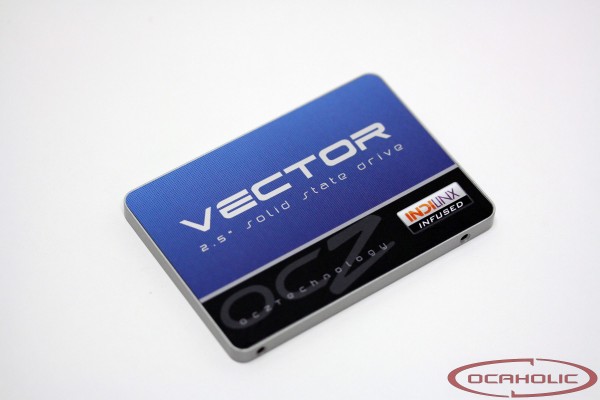 Meanwhile most enthusiasts have an SSD in their PC and since manufacturers are successfully conquering the mass maket with SSDs, these new, quick drives are nowadays widely spread. In the past there were quite a few drives that died an all sudden death. Even today customers are not sure for how long their SSD will last and especially the P/E-cylce count (program/erase cycles) is something that worries quite a few well informed users. In this diary we're going to check what it takes to use up all P/E-cycles an OCZ Vector SSD has to offer, that features 256 Gigabyte capacity. So what is your guess, how long is it going to take until the drive refuses to work.
Meanwhile most enthusiasts have an SSD in their PC and since manufacturers are successfully conquering the mass maket with SSDs, these new, quick drives are nowadays widely spread. In the past there were quite a few drives that died an all sudden death. Even today customers are not sure for how long their SSD will last and especially the P/E-cylce count (program/erase cycles) is something that worries quite a few well informed users. In this diary we're going to check what it takes to use up all P/E-cycles an OCZ Vector SSD has to offer, that features 256 Gigabyte capacity. So what is your guess, how long is it going to take until the drive refuses to work.

Reliability of SSDs appears to be a topic on which useres would
like to get additional information. In order to get a feeling for how long SSDs
are actually going to survive heavy torture testing, we're trying to write on an
OCZ Vector SSD with 256 Gigabyte capacity until the NAND flash memory starts to
go over into the read-only mode. Read-only mode is acutally a good keyword. Most
users associate dying NAND flash memory with a dying SSD. These are actually two
different things. If you're worried about using up all P/E-cycles of the NAND on
the SSD you bought, this doesn't mean, that, even if you manage to do so, your
SSD isn't responding anymore. When a NAND flash cell is out of P/E-cycles then
it goes into a read only state, meaning you'll still be able to retrieve data in
order to make a backup. Users usually associate using up all P/E-cycles with the
absolute worst case, which would be a drive that doesn't respond to anything
anymore.
 Meanwhile most enthusiasts have an SSD in their PC and since manufacturers are successfully conquering the mass maket with SSDs, these new, quick drives are nowadays widely spread. In the past there were quite a few drives that died an all sudden death. Even today customers are not sure for how long their SSD will last and especially the P/E-cylce count (program/erase cycles) is something that worries quite a few well informed users. In this diary we're going to check what it takes to use up all P/E-cycles an OCZ Vector SSD has to offer, that features 256 Gigabyte capacity. So what is your guess, how long is it going to take until the drive refuses to work.
Meanwhile most enthusiasts have an SSD in their PC and since manufacturers are successfully conquering the mass maket with SSDs, these new, quick drives are nowadays widely spread. In the past there were quite a few drives that died an all sudden death. Even today customers are not sure for how long their SSD will last and especially the P/E-cylce count (program/erase cycles) is something that worries quite a few well informed users. In this diary we're going to check what it takes to use up all P/E-cycles an OCZ Vector SSD has to offer, that features 256 Gigabyte capacity. So what is your guess, how long is it going to take until the drive refuses to work. Article in English
Article in English Artikel in Deutsch
Artikel in Deutsch Article en français
Article en français Articolo in italiano
Articolo in italiano
 Samsung 845DC EVO SSD 960 Gigabyte Review
Samsung 845DC EVO SSD 960 Gigabyte Review 

